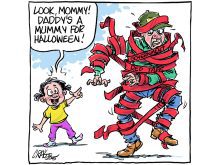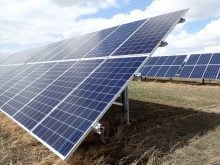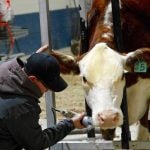Guebert is an agricultural columnist in Illinois.
American farmers and global food makers have had more than a decade to get comfortable with wild, year-to-year swings in crop acres brought by decoupled, “freedom to farm” agricultural policies, an 800 percent boom in biofuel production and an increasingly hungry export market for American meat and grain.
Still, the 2009 Prospective Planting Report, released March 31 by the U.S. Department of Agriculture, held a punch no one saw coming. According to USDA, American farmers will plant 7.8 million fewer acres of key crops this year than last.
Read Also

Farmer ownership cannot be seen as a guarantee for success
It’s a powerful movement when people band together to form co-ops and credit unions, but member ownership is no guarantee of success.
That’s a lot of acres growing nothing more than last year’s stubble and next year’s dreams. It’s akin to European farmers not planting one square centimetre of Belgium and nearly half – the flatter half, one reckons – of Luxembourg.
On this side of the pond, the unplanted acres are just one million less than what will be planted to cotton, 8.81 million, this year.
The cuts are as broad-based as they are deep, says USDA. Corn acres will drop slightly, down 1.2 percent, while soybeans will show a modest boost. Plantings for most other crops, however, are forecast to fall; some to flat-out tumble.
The USDA sees sorghum acres down 16 percent, barley plantings down 6.6 percent, winter wheat off 7.3 percent, cotton down seven percent, sunflowers down 17.7 percent, durum wheat down 10.5 percent and peanuts off by 26.7 percent.
Add up all those downers and 2009 total planted acres are 8.8 million acres less than 2008. Increased plantings in rice, hay, oats (come on, oats?) soybeans and sugar beets, however, trim that total to 7.8 million.
If you let professional market watchers scratch your head over the drop, though, most will be done long before you.
Why? If you subtract the huge acreage increases farmers unleashed in 2007 and 2008 due to soaring corn prices, says Darrell Mark, an extension marketing specialist at the University of Nebraska, 2009’s total is “nearly in line with plantings seen from 2003 to 2006” when market prices were, like this year so far, more modest.
As such, he says, the nearly eight million-acre drop reported by USDA is hiding in plain sight.
“I suspect farmers answered USDA’s questions truthfully,” says Mark. “Given the much higher planting costs this year and moderate market prices, they truly don’t know their complete crop acres or mix yet.”
Certainly, he adds, planted acreage could drop dramatically this year compared to last “because access to credit is an issue and some farmers may be facing a credit crunch.”
Most major commodity markets did rally on USDA’s short-acres report.
In fact, technical analysts – those elves who follow price charts – viewed the March 31-April 3 Chicago futures action as a “key reversal” week: prices for all the major farm commodities, except hogs and Class III milk, according to DTN analyst Darin Newsom, took out their previous week’s low and high before finishing the week higher. Chartists see that broad strength as a classic launching pad for a bull market.
I’m far less certain. Even if the projected cut in plantings occurs, American farmers will plant their third largest corn crop since 1949 and the largest soy acreage ever. Trend-line yields for both, combined with ailing and, by year’s end, conceivably weaker demand might make this spring rally look pretty sweet come October.
And if the acreage cuts don’t occur, winter will be long, dreary and cheap.














